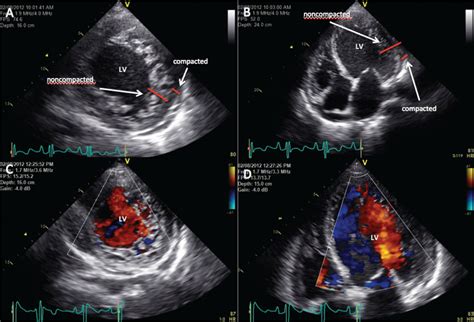lv compaction | non compaction cardiomyopathy guidelines lv compaction Left ventricular noncompaction is a rare cardiomyopathy, that should be considered as a possible diagnosis because of its potential complications – heart failure, ventricular arrhythmias, and embolic events.
Colonial Marine Haar, a beacon of hope shining bright. Wallace K. Haar, the warrior of the stars . Mayl Fore, the savior of LV-624 and the United Americas His legacy lives on, in the hearts of all who never bow to the xenos . but they were always pretty damn fun. 1 Like. QueenBopTheFirst January 9, 2024, 4:36am 8. Tim “Caz” Tilton .
0 · non compaction cardiomyopathy guidelines
1 · non compaction cardiomyopathy echo criteria
2 · left ventricular non compaction symptoms
3 · compaction vs non cardiomyopathy
4 · bi ventricular non compaction cardiomyopathy
5 · Lv non compaction on echo
6 · Lv non compaction guidelines
7 · Lv compaction cardiomyopathy
Coffee Bean Las Vegas, Las Vegas, Nevada. 3,295 likes. Simply the Best! Offering 100% Free Wi-Fi in all of our stores!
Left ventricular noncompaction (LVNC, also known as noncompaction cardiomyopathy [1]) is a complex myocardial disorder with a distinct phenotype characterized . Left ventricular noncompaction is a rare cardiomyopathy, that should be considered as a possible diagnosis because of its potential complications – heart failure, ventricular . Left ventricular non-compaction (LVNC) is a rare cardiomyopathy that usually affects the left ventricle in which the two-layered myocardium has an abnormally thick sponge-like, trabecular layer and a thinner, compacted myocardial layer. Left ventricular noncompaction (LVNC, also known as noncompaction cardiomyopathy [1]) is a complex myocardial disorder with a distinct phenotype characterized by prominent LV trabeculae and deep intertrabecular recesses [2,3].
Left ventricular non-compaction (LVNC) cardiomyopathy is a condition where your lower left heart chamber (left ventricle) doesn’t develop properly. Instead of being firm and smooth, the left ventricle is spongy and thick.
Left ventricular noncompaction is a rare cardiomyopathy, that should be considered as a possible diagnosis because of its potential complications – heart failure, ventricular arrhythmias, and embolic events. Left ventricular noncompaction cardiomyopathy (LVNC) remains a largely underinvestigated and poorly understood diagnosis. The number of peer‐reviewed articles published on LVNC has grown dramatically over the past decade.Left Ventricular Non-Compaction Cardiomyopathy (LVNC): symptoms, diagnosis, and management options. Join our support group for guidance and information.
Left ventricular non-compaction (LVNC) is a rare congenital phenotype defined by the presence of prominent left ventricular trabeculae, deep intertrabecular recesses (continuous with the ventricular cavity), and a thin compacted layer.
Left ventricular noncompaction (LVNC) is a congenital pathology that directly affects the lining walls of myocardial tissue, causing trabeculations with blood filling in the inner wall of the heart, concomitantly with the development of a mesocardial thinning. LVNC, also known as spongy myocardium, is a distinct form of cardiomyopathy occurring in-utero when segments of spongy myocardium fail to transform into compact, mature musculature resulting in prominent myocardial trabeculae, deep intra-trabecular recesses, and decreased cardiac function (1). There is considerable overlap between left ventricular noncompaction (LVNC) and other cardiomyopathies. LVNC has been reported in up to 40% of the general population, raising questions about whether it is a distinct pathological entity, a remodeling epiphenomenon, or merely an anatomical phenotype. Left ventricular non-compaction (LVNC) is a rare cardiomyopathy that usually affects the left ventricle in which the two-layered myocardium has an abnormally thick sponge-like, trabecular layer and a thinner, compacted myocardial layer.
Left ventricular noncompaction (LVNC, also known as noncompaction cardiomyopathy [1]) is a complex myocardial disorder with a distinct phenotype characterized by prominent LV trabeculae and deep intertrabecular recesses [2,3]. Left ventricular non-compaction (LVNC) cardiomyopathy is a condition where your lower left heart chamber (left ventricle) doesn’t develop properly. Instead of being firm and smooth, the left ventricle is spongy and thick. Left ventricular noncompaction is a rare cardiomyopathy, that should be considered as a possible diagnosis because of its potential complications – heart failure, ventricular arrhythmias, and embolic events. Left ventricular noncompaction cardiomyopathy (LVNC) remains a largely underinvestigated and poorly understood diagnosis. The number of peer‐reviewed articles published on LVNC has grown dramatically over the past decade.
Left Ventricular Non-Compaction Cardiomyopathy (LVNC): symptoms, diagnosis, and management options. Join our support group for guidance and information.
non compaction cardiomyopathy guidelines
non compaction cardiomyopathy echo criteria


Left ventricular non-compaction (LVNC) is a rare congenital phenotype defined by the presence of prominent left ventricular trabeculae, deep intertrabecular recesses (continuous with the ventricular cavity), and a thin compacted layer.
Left ventricular noncompaction (LVNC) is a congenital pathology that directly affects the lining walls of myocardial tissue, causing trabeculations with blood filling in the inner wall of the heart, concomitantly with the development of a mesocardial thinning.
LVNC, also known as spongy myocardium, is a distinct form of cardiomyopathy occurring in-utero when segments of spongy myocardium fail to transform into compact, mature musculature resulting in prominent myocardial trabeculae, deep intra-trabecular recesses, and decreased cardiac function (1).

left ventricular non compaction symptoms
compaction vs non cardiomyopathy
In the remarks section, it's showing "COMBAT ZONE LV CARRYOVER BAL = 64. EXPIRES 30 SEP 2023". I wasn't on a combat zone deployment. Is this something DFAS uses for everyone who had use or lose leave balance at the end of 2020 fiscal year? or do I need to contact Finance to fix the wording? 4 comments. Best. Add a .
lv compaction|non compaction cardiomyopathy guidelines

























